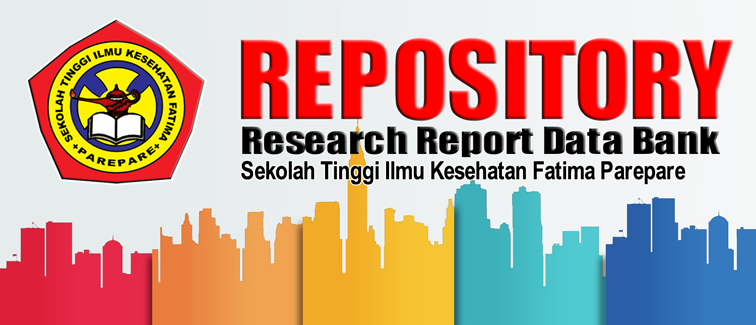Implementasi Range Of Motion (ROM) Dengan Gangguan Mobilitas Fisik Terhadap Pasien Stroke di RSUD Andi Makkasau Kota Parepare
Sari
Latar Belakang: Kerusakan pada bagian otak yang mengendalikan gerakan merupakan gejala umum stroke non-hemoragik (NHS), yang dapat menyebabkan berkurangnya mobilitas fisik. Pasien stroke yang tidak banyak bergerak setelah serangan stroke cenderung memiliki keterbatasan mobilitas pada persendian, yang dapat menyebabkan komplikasi lebih lanjut dan kemungkinan kematian. Tujuan: kami di RS Andi Makkasau Parepare adalah untuk mengetahui seberapa sering kami menggunakan terapi rentang gerak (ROM) pada pasien NHS yang memiliki masalah mobilitas.Metode Penelitian: Dua pasien stroke dengan gangguan kekuatan otot menjadi subjek studi kasus deskriptif kualitatif. Dua pasien stroke dengan kekuatan otot yang berkurang dan masalah gerakan menjadi subjek penelitian. Kekuatan otot kedua pasien meningkat setelah tiga hari menjalani terapi rentang gerak. Kekuatan klien 1 pada ekstremitas atas dan bawah telah membaik, tetapi kondisinya masih belum sepenuhnya pulih. Pemulihan klien 2 lebih baik, dan kekuatan ototnya mencapai potensi optimalnya. Kesimpulan: Pemulihan kekuatan otot dan penyelesaian sebagian kesulitan perawatan dapat dicapai dengan penerapan perawatan rentang gerak. Rekomendasi: Melakukan latihan rentang gerak di rumah dapat membantu pasien menjadi lebih mandiri dan mengurangi risiko kekambuhan..
Kata Kunci: Stroke Non Hemoragik, Gangguan Mobilitas Fisik, Range of Motion (ROM)
ABSTRACTBackground: Impaired physical mobility is a common symptom of non- hemorrhagic stroke (NHS), which is caused by injury to the central nervous system, which regulates movement. Increasing the risk of disability or death, inactivity after a stroke reduces joint range of motion, exacerbating the patient's condition. Our goal here at RSUD Andi Makkasau Parepare is to track out the instances of ROM therapy that the NHS has used with patients who have mobility issues. Two stroke patients with weak muscles were the subjects of case studies conducted using a descriptive qualitative approach. Two patients suffering from reduced muscular strength and mobility due to a stroke served as research subjects. Both patients' muscle strength increased after three days of range-of- motion therapy. The strength of Client 1's upper and lower extremities improved, but they did not fully recover. Client 2's recuperation was superior; their muscle strength was at its peak. Results: Range-of-motion (ROM) treatment has helped with muscle strength rehabilitation and has helped with several nursing issues. Relapse prevention and increased patient independence can be achieved by the continued use of range-of-motion exercises at home, which is something that families are expected to support.
Keywords: Non-Hemorrhagic Stroke, Impaired Physical Mobility, Range of Motion (ROM).
Kata Kunci
Teks Lengkap:
PDFReferensi
Adiputra, W, Setiawan, R, Prasetya, & F. (2021). Kriteria Etika Penelitian dalam Asuhan Keperawatan: Penerapan Informed Consent dan Persetujuan Subjek. Jurnal Keperawatan Indonesia, 29(3), 202–210.
Albers, G, Warks, M, P, Christensen, & S. (2021). Embolism and Stroke Pathogenesis: The Role of Cardiac Sources and Arterial Disease. Stroke, 52(3), 899–906.
Alberts, M, J, Fisher, & M. (2020a). Ataxia and motor coordination deficits following ischemic stroke. Journal of Stroke and Cerebrovascular Diseases, 29(6), 114–123.
Alberts, M, J, Fisher, & M. (2020b). Ataxia and motor coordination deficits following ischemic stroke. Journal of Stroke and Cerebrovascular Diseases, 29(6), 114–123.
Amari, & S. (2023). Analisa Data dalam Penelitian Kesehatan: Pendekatan Wawancara dan Observasi untuk Validasi Data Subjektif dan Objektif. Jurnal Keperawatan Klinis, 18(2), 112–118.
Cameron, C, Et, & Al. (2021a). Anticoagulation Therapy for Stroke Prevention in Atrial Fibrillation. Journal of Clinical Neurology, 36(4), 225–233.
Cameron, C, Et, & Al. (2021b). Physical Mobility Impairments: Definitions, Stages, and Contributing Factors. Journal of Rehabilitation Medicine, 45(3), 165–174.
Campbell, B, & C. (2020). Functional Disability in Acute Ischemic Stroke: Mechanisms and Rehabilitation Approaches. Journal of Stroke Rehabilitation, 24(4), 232–239.
Cernak, Walker, P, & A. (2021). Pathophysiology of Non-Hemorrhagic Stroke: Thrombosis and Embolism Mechanisms. Stroke Research & Therapy, 48(1), 45–53.
Cumming, B, T., Bernhardt, & J. (2020). Effectiveness of Range of Motion Exercises in Stroke Rehabilitation: Impact on Mobility, Independence, and Depression. Journal of Clinical Neuroscience, 73, 49–55.
Damiani, A, C., Torres, & L, A. (2021). Rehabilitation of Patients with Non- Hemorrhagic Stroke: The Role of Range of Motion Exercises in Preventing Complications. Journal of Stroke Rehabilitation, 18(4), 317–324.
Doyle, K, P, Green, E, A, Morrison, H, & A. (2020). Cerebral Circulation and Oxygenation in Ischemic Stroke: Pathophysiology and Implications for Treatment. Journal of Neurology and Stroke, 15(3), 184–191. https://doi.org/10.1016/j.jneurol.2020.01.005
Refbacks
- Saat ini tidak ada refbacks.
